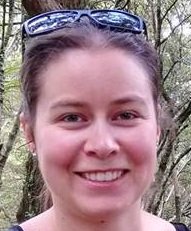Despite scientists discovering the gene for Huntington’s Disease (HD) in 1993, it’s still unclear how this gene causes HD. Animals that have been genetically modified to have Huntington’s Disease are the best hope of understanding this disease and finding a cure. An international team of scientists, led by New Zealand’s very own, Professor Russell Snell from the University of Auckland, have been using these sheep to help solve the mystery of HD. Rodents are typically used to model human diseases because they are small and easy to work with. However, when it comes to diseases of the brain, especially those that have a slow progression, larger animals like sheep have advantages. They have larger, more human-like brains. They also have a longer lifespan, which shows us a more natural progression similar to humans. While these sheep do not develop end-stage HD, they capture the pre-symptomatic and early symptomatic stages that offer the best treatment windows.
A group of these sheep have been studied extensively. At five years of age, they were humanely euthanised, and their brains and other tissues were used for research. As part of this process, we have gained a lot of beneficial data. This data has been compared between sheep who developed early-stage Huntington’s Disease, and those of the same breed and age that did not. They were also used to look at what was going on in different organs and types of cells. When the data was analysed, it showed a lot of differences between the two groups of sheep. What is significant about this data is the large amount that has been collected. Altogether, it shows over 25,000 differences. Nowadays, generating very large datasets is standard in biology, but interpreting all the data can be a complicated and time-consuming process. Research is ongoing to determine what all of these differences mean, and how they contribute to HD. In the meantime, it is useful for this large amount of data to be publicly available for the wider scientific community, so that other researchers can examine it and generate their own ideas. Having more scientists working on the same data speeds up research, bringing us closer to a cure.
In order to make this large body of information available to the wider scientific community, a web-based platform was created by PhD student Emily Mears, who was working with Russell and his team at the University of Auckland. All of the data has been re-formatted to make it directly comparable. Software tools were developed so that scientists can make graphs of the data and quickly perform an analysis. The data is also available to be downloaded for scientists who would like to analyse it using more complex methods. For those scientists who would like to develop their ideas further, the entire range of organs and tissues from these animals are available on request.
This website is not only valuable for studying HD in sheep. It can also be used to help confirm or disprove findings from human patients, as well as enabling direct comparison with other animal models of HD. Ultimately, the more data on HD that is available, and the faster this data can be processed, the faster scientists can work out how to prevent HD.
This is fantastic news for the HD Community and the biggest advantage is that this data is being shared across the world for all scientists to access. It’s awesome to see that the people matter, and that this data is shared as opposed to being held onto by one country in the race to find a cure.
The platform can be found at https://hdsheep.cer.auckland.ac.nz/
You can also read more about it here: https://pubmed.ncbi.nlm.nih.gov/34420978/
About the Author
Natasha is a postdoctoral scientist who works with sheep models of Alzheimer’s Disease (AD), with the hope of finding a method of prevention. Her PhD project was to create a sheep model of Alzheimer's Disease using CRISPR-Cas9 gene editing technology. Her job now is to assess the model to prove that it will be a useful tool in AD research. This work was funded by a combination of the Freemason’s of New Zealand, the University of Auckland and Brain Research New Zealand. Before starting her PhD, she completed a Bachelor of Science at Massey University, majoring in genetics and zoology. She then went on to complete a Master’s Degree with First Class Honors in Evolutionary Biology, studying the natural hybridization of different species of tree weta, a native New Zealand insect, and how that affected the gene pool of each species. She has wide ranging interests across the biological sciences, and is passionate about learning, research, and education.















